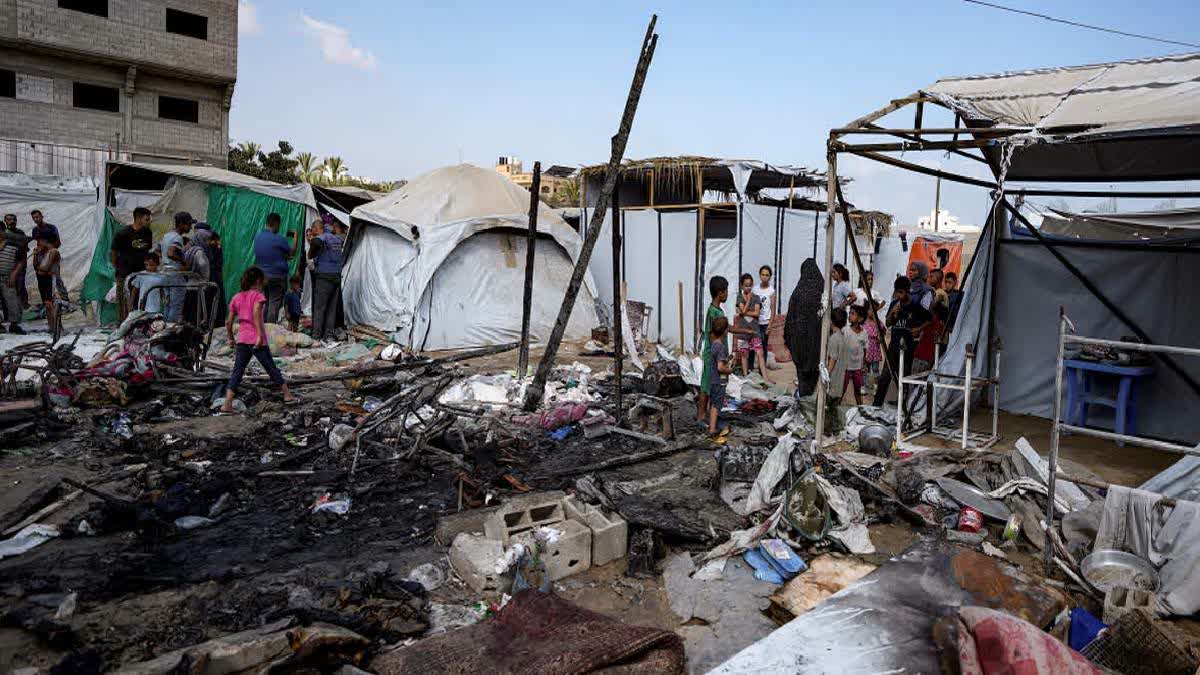Hyderabad:Former US President Donald Trump has revealed that US intelligence agencies have warned him of a serious assassination threat from Iran.
Taking to his X handle, Trump thanked the US Congress for allocating more budget to the Secret Service and posted, "Big threats on my life by Iran. The entire US Military is watching and waiting.......An attack on a former President is a Death Wish for the attacker"
However, the assassination bid on Trump is not a lone instance. Here are some incidents when a country tried to eliminate leaders of other countries.
- Volodymyr Zelensky (Ukraine ) 2024 :In May 2024, The Ukrainian security service (SBU) said that it has foiled a Russian plot to assassinate President Volodymyr Zelensky and other high-ranking Ukrainian officials. Ever since Russia's full-scale invasion of Ukraine in February 2022, plots to assassinate Ukrainian President Volodymyr Zelensky have been commonplace.
- Vladamir Putin ( 2017) :Vladamir Putin himself publicly disclosed in 2017 that he has survived at least five assassination attempts.
- Kim Jong-un (North Korea, 2017) :In March 2017, the North Korea’s ministry of state security accused CIA and South Korea’s intelligence service of being behind an alleged assassination attempt on its leader Kim Jong-un.
- Iraqi president Saddam Hussein in March 2003 :On March 20, 2003, The United States attempted to kill Saddam Hussein with a cruise missile attack in the early hours of this morning, in what President George Bush said were the "early stages" of a US-British invasion of Iraq.
- Slobodan Milosevic of Serbia:The US targeted Milosevic during the Nato bombing campaign of 1999, narrowly missing him when his empty villa was hit by three laser bombs.
- Muammar Gadafy of Libya:After a Libyan terrorist attack in Berlin in 1986, US jets tried to kill Gadafy in bombings which included a strike at his personal compound. It killed his infant adopted daughter.
- President Sukarno of Indonesia:A "top secret" document from 1975 reveals the CIA considered assassinating Sukarno during the Cold War. According to the report, Richard Bissell, who was CIA Deputy Director of Plans at the time, testified there had been discussion within the CIA of the "possibility of an attempt on the life of President Sukarno of Indonesia". Richard Bissell, stressed the CIA had "absolutely nothing" to do with the death of Sukarno in 1970, when his health deteriorated after being put under house arrest.
- Prince Norodom Sihanouk of Cambodia:President Nixon claimed that the CIA set up several plots to kill him in the early 1960s. He was deposed in a 1970 coup.
- Salvador Allende of Chile:President Nixon made it clear in 1970 that a CIA assassination of the new left-wing president would not be unwelcomed. Allende was killed in a 1973 coup.
- Ngô Đình Diệm, president of South Vietnam 1963:On November 2, 1963, Ngô Đình Diệm, president of South Vietnam, was arrested and assassinated in a CIA-backed coup d'état led by General Dương Văn Minh.
- Rafael Trujillo of the Dominican Republic:The administrations of Eisenhower and Kennedy, through the CIA, plotted the assassination of the dictator for several years before a group of dissidents shot him to death in 1961.
- Patrice Lumumba of Congo President:Eisenhower ordered the assassination of the country's first prime minister in 1960. CIA chief Allen Dulles sent a CIA scientist to Congo with a lethal virus. But before the plan could be activated, Lumumba was deposed. He was later captured with CIA help and killed by rebel forces.
- Fidel Castro of Cuba:The CIA hatched several plots to kill Castro between 1960 and 1965. "The proposed assassination devices ran the gamut from high-powered rifles to poison pills, poison pens, deadly bacterial powders and other devices which strain the imagination,", according to the Church report. The US admitted to eight assassination attempts on Castro, though the Cuban put the figure much higher, with one estimate in the hundreds.
Targeted Killings
Central Intelligence Agency (CIA) was forced to step back on such killings after a US Senate investigation in the 1970s exposed the scale of its operations. Following investigation, then president Gerald Ford signed in 1976 an executive order stating: “No employee of the United States government shall engage in, or conspire in, political assassination.” In spite of this, the US never totally abandoned the strategy, simply changing the terminology from assassination to targeted killings, from aerial bombing of presidents to drone attacks on alleged terrorist leaders.
